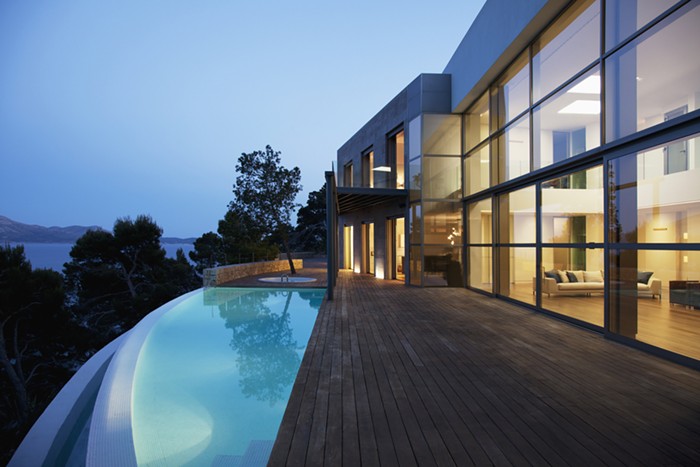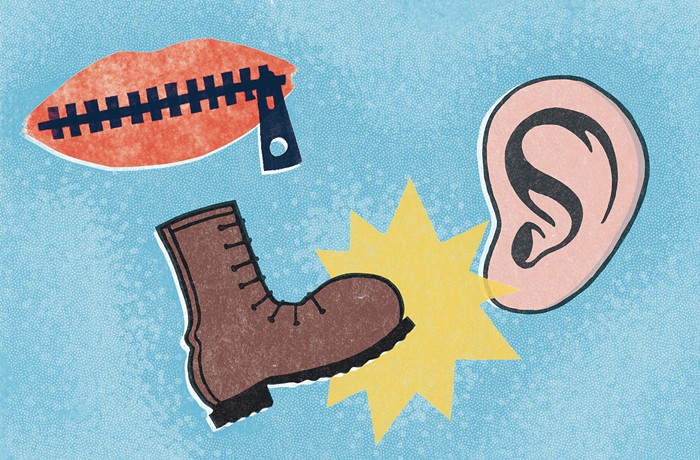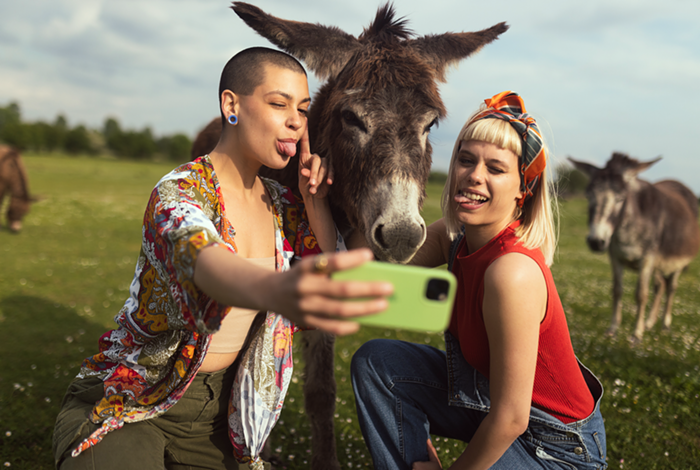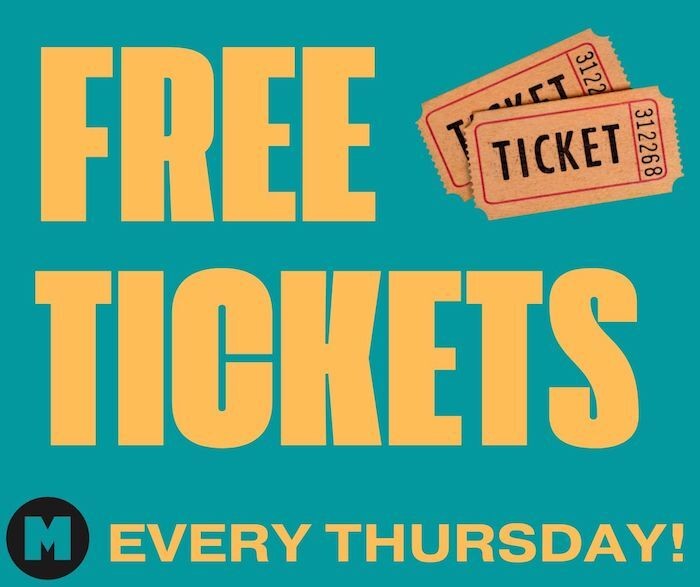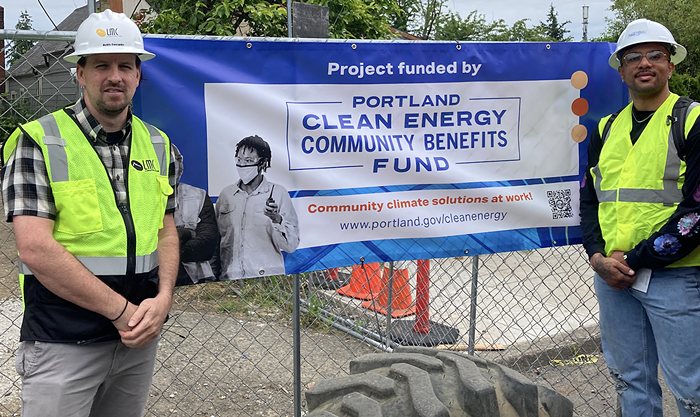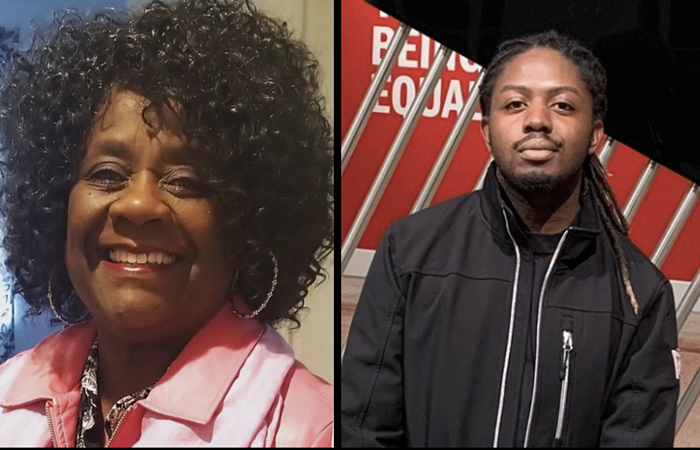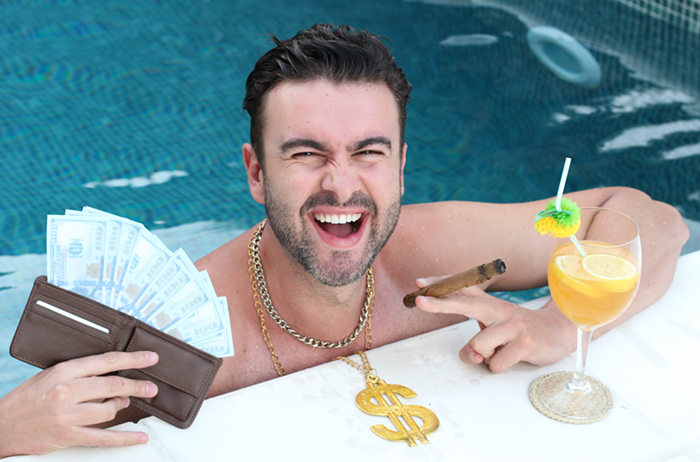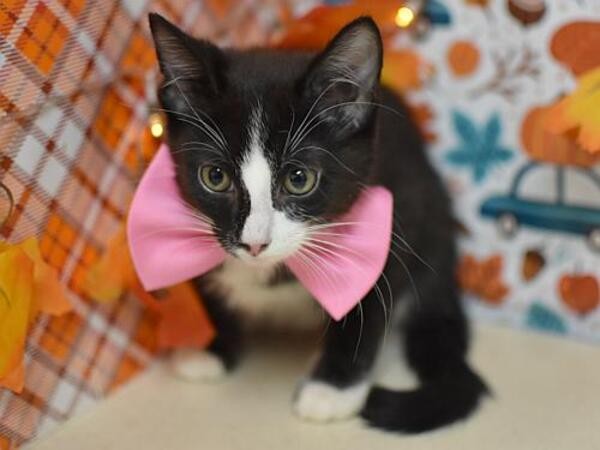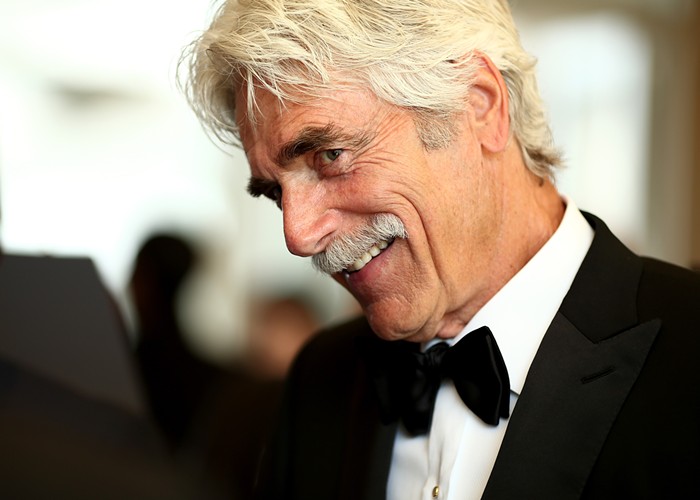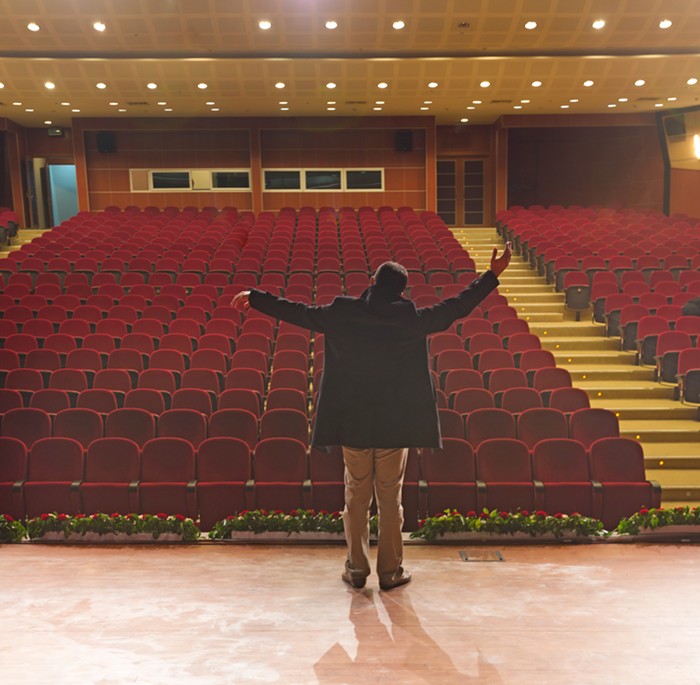Sure, we can drink. We can drink like champions. But that doesn't make us special. People have been drinking in Portland since it was little more than a hardscrabble tent town cut from the banks of the Willamette.
The Mercury presents the following "history" (we were drinking as we researched, so keep that in mind) in hopes that you'll commit to making this time, our time, worthy of tomorrow's tales. It'll be hard work, but we're certain you— and your liver—are up to the task.
---
America the Boozy-full: The Spirits of '76
When Oregon was still just a tangle of wilderness—the territory of proud native people still unaware of the coming drunken white man shit-storm—America was busy being built on a hazy foundation of liquor.
Writing the first draft of the Declaration of Independence, Thomas Jefferson (who brewed his own beer at the time) loosened up and put pen to paper at a tavern in Philadelphia. George Washington was at one time one of America's premier whiskey distillers. And by all accounts, the remainder of the founding fathers could knock it back; two days before completing the Constitution they reportedly put away seven bowls of boozy punch the size of small duck ponds in an evening that resulted in a bar tab including eight bottles of whiskey, 22 bottles of port, and an ass-load (literally: hauled in by donkey) of Madeira fortified wine.

Keep Portland Wide Open: 1851-1914
With a beginning like that, it's not surprising that when enterprising Americans finally made it to the stump-ridden clear-cut on the banks of the Willamette, they immediately built places to drink. In 1851, the year the City of Portland was incorporated, William Ladd arrived in town from San Francisco on a ship full of booze. Shortly after there was an explosion of saloons, most likely supplied liquor by Ladd.
Not content to buy their drinks third hand, Portlanders began their grand love affair with brewing, beginning in 1852 with the Liberty Brewery. Four years later Blitz-Weinhard began operation and Portland was on its way to being one of the drunkest cities on the West Coast.
The city has been debauched since its incorporation, but never more so than at the turn of the century when downtown Portland was a nest of drunks, ne'er-do-wells, thieves, and whores. Thankfully the Mercury was there to cover it all. Well, not The Mercury, but our namesake, the Sunday Mercury, which contained gossipy reports of the town's colorful citizenry. For instance, in an item published on June 20, 1889, one Sunday Mercury writer reported the trial of 28 downtown women indicted for prostitution, calling them "fallen fair ones."
The nexus of indecency and inebriation was the North End, an area bordered by SW Salmon and NW Hoyt, from 6th Avenue to the river. In 1895 the North End was designated the center of commercial prostitution and gambling. The area was home to "combination houses," which held not only saloons and card rooms, but also theaters and "cribs" for prostitutes.
Summers in the North End were riotous: Men walked the streets as whores leaned out from balconies shouting lewd advertisements, while bands with names like "The Thirsty Seven" led patrons to competing saloons. The police were often so overwhelmed they'd desert their posts and join the drunken fracas.
The most popular saloon at the time was a seven-story sin palace called Erickson's that took up an entire city block at the end of West Burnside. Erickson's boasted a 684-foot bar, a theater with its own orchestra, a bakery, an ice cream parlor, a pool hall, a card room, its own drunk tank, and six floors of prostitution.
The authorities at the time turned a blind eye to the brutality and drunkenness of the North End. One councilman, named Williams, even campaigned to "Keep Portland Wide Open," claiming that his election would see more boxing, horseracing, balloon races, and other entertainments—the less noble pursuits being found between the lines.
That all changed with the election of Mayor Harry Lane, who systematically worked to shrink the North End. But you can't keep a good drunk down for long.
Founded by Polish immigrants in 1905, a bar that is now one of the many McMenamins operations is one of the oldest in town. The White Eagle Saloon (836 N Russell) is rife with legend, said to be haunted by the ghosts of prostitutes from its turn as a brothel, opium addicts in the basement's former drug den, shanghaied drunkards shuttled through its underground tunnels—take your pick. Better yet, spend the night in the tiny upstairs hotel, and let us know which you encounter. MS
The oldest continuously run bar in town is also one of the most beautiful. Huber's (411 SW 3rd) has been in operation under its current name since 1895. The gorgeous stained glass ceiling arching over patrons adds a weight and beauty to every drink. They have been famous for turkey sandwiches and Spanish coffees, and should be considered the heart of Portland's boozy soul. PAC
Brandy Sling
When Jerry Thomas published his The Bartender's Guide in 1862, it was the first drink guide in America and included recipes for what we now recognize as cocktails. Prior to that, slings were the thing. This brandy sling is from Thomas' guide.
1 small teaspoonful of powdered
white sugar
1 wineglass of water
1 small lump of ice
1 wineglass of brandy
nutmeg
Dissolve the sugar in the water. Add the brandy and ice, stir well with a spoon. Grate a little nutmeg on top, and serve.

Oregon and Prohibition−19 Years of Suck: 1914-1933
"We appeal to the better instincts of your hearts; in the name of desolated homes, blasted hopes, ruined lives, and widowed hearts; for the honor of our community; for our prosperity; for our happiness; for our good name as a town..."
—from Appeal to Manufacturers and Dealers in Intoxicating Drinks by the Women's Temperance Prayer League of Portland, 1874
Portland continued to booze its way through the first part of the 1900s until Oregon enacted Prohibition in 1914—six years before the rest of the United States. While everyone else was cavorting like it was 1999, folks like the Women's Temperance Prayer League of Portland had successfully influenced the politicians in Salem, and incited moral outrage in Oregon's citizenry.
The ladies of the temperance movement saw it as their Christian duty to bring a new world of sobriety to the drunken rabble of Portland. Their main tactic was to storm saloons and stage public prayer meetings. As you might imagine, they were not well received. Soon saloons began hiring bands, acrobats, and minstrel performers to distract patrons from the women's shenanigans.
Things changed when the League became embroiled in a long battle with Mr. Walter Moffett—proprietor of the Webfoot Saloon—who, upon seeing the women's prayer group enter his establishment, shouted, "I don't want any damned whores here."
That didn't deter the fine ladies of the Temperance Prayer League; they continued to frequent the Webfoot until their presence started a riot in which chairs were thrown, foul language was used, and one woman was held with a gun to her head.
After the chaos, the ladies were arrested, tried, and convicted for holding a prayer meeting on a public sidewalk in front of a saloon. They each paid $5 in fines and spent less than one full day in jail.
On November 3, 1914, the Temperance League won their victory—Oregon voters passed a state amendment prohibiting the sale, manufacture, or advertisement of alcohol in the state. On January 16, 1920, the 18th Amendment went into effect and the rest of the country joined Oregon in restless temperance.
But drunkards are a wily bunch, and Portland's older pubs are rife with stories of supposed speakeasies. Some reports peg the number of speakeasies at 100 on any given day. Kelly's Olympian is said to have housed a speakeasy, as did the castle-like Campion Hall on the corner of NW 20th and Hoyt. Huber's began serving booze to patrons in coffee cups. Complex and bizarre stills proliferated on the outskirts of the city, and the banks of the Willamette were a common point of entry for illegal Canadian whiskey.
During the long dark days of Prohibition, the police essentially controlled the booze supply, having confiscated enough illicit liquor to effectively control the price of everything they put back on the street.
By 1933, after suffering under the yoke of "sobriety" for almost 20 years, Oregon ratified the 21st Amendment, repealing Prohibition. And the party would have started again in earnest, if killjoy Governor Julius Meier had not immediately signed the Liquor Control Act creating the Oregon Liquor Control Commission (OLCC). This buzz-stomping organization was given "exclusive rights to sell distilled spirits and fortified wine as well as the authority to license private businesses to sell beer and table wine by the bottle and the glass." They remain a very good reason why Portland isn't twice as fun.
Fortunately for my sex life, alcohol is no longer a prohibited indulgence—but if the idea of drinking with discretion appeals to you, consider Gil's Speakeasy (609 1/2 SE Taylor) a tiny space tucked unobtrusively beneath the Yamhill Apartments. You could disappear for hours in the dark, clubby little bar—no password required. AH
It's not exactly a speakeasy, but you'll certainly feel like you're in the know as you climb the staircase to the Secret Society Lounge (116 NE Russell), perched comfortably atop Toro Bravo. Classic cocktails from the pre-Prohibition era, including several with absinthe, are perfectly mixed and presented to send you tumbling back in time. NL
The Scofflaw
Once Prohibition had begun, a prominent teetotaler held a contest to create a word that would define people who flagrantly disobeyed the 18th Amendment. The word that won was "scofflaw." A European bartender quickly came up with a cocktail bearing the same name. Take that, sober Americans!
1 oz Canadian whiskey
1 oz dry vermouth
1 dash orange bitters
1 dash grenadine syrup
1/4 oz lemon juice
Stir well over ice cubes in a mixing glass. Strain into a chilled cocktail glass, and serve. Keep in mind, this will be a smallish drink and should be served in an appropriately sized glass.

What the Mayor Don't Know: 1940s
After Prohibition, Portland slowly came to terms with the OLCC and its new regulations, but cocktails still presented difficulties. Hard alcohol could only be purchased at state-owned liquor stores, so you'd have to bring your own stash to bars (which were only allowed to sell beer and wine), where the bartender could then pour it into ice and mixers. The OLCC also kept the price of hooch inordinately high, which made for a brisk trade in illicit liquor that kept the waterfront buzzing in the shadows of night.
Based on a City Club report from the time, it seems Prohibition didn't do much damage to Portland's debauched roots. It was still a "wide open" town. All manner of illegal activities were conducted out in the open. Gambling and prostitution, rarely hidden, were common accompaniments to boozing and carousing. And though the North End neighborhood had shrunk to a few blocks north of West Burnside, it was still notorious.
Also notorious was Al Winter's Pago Pago Club, a Polynesian joint that glowed on SW Stark like a beacon of exotic delights. The Pago Pago had a full menu of Chinese and American food, South Seas-themed entertainment, and according to legend, Portland's first illegal silver dollar slot machine, brought all the way from Chicago by Portland "entrepreneur" Lester Beckman.
On the Eastside, a club called the Dude Ranch (now the site of the Leftbank) was a colorful temple of jazz music, and saw performances by legends like Thelonious Monk. The clientele was as mixed and wild as the entertainment, which also included strippers and tap dancers.
It was a breathless time for Portland bars and clubs—a parade of colorful hoods and drunks roamed the streets, an undiscovered Sammy Davis Jr. regularly performed with the Will Mastin Trio on the city's stages, and everyone was having a grand old time.
Then, in 1948, Portland elected the city's first female mayor, Dorothy McCullough Lee. Unfortunately for Portland's saloon-going citizenry, Lee had been elected on a platform of moral reform. She was on a mission from God.
Lee was adamant that she would clean up the city, and after shutting down a number of Chinese gambling dens she enacted a series of ordinances that earned her the nickname "No Sin Lee." Under her watch, live musical performance was banned, as were dancing and pinball (considered by Lee the first step toward slot machine gambling).
Lee took special umbrage to a troupe of drag performers that had set up shop in a club called the Music Hall, widely known as a hangout for lesbians. There, five drag performers from San Francisco freaked the shit out of two police from the Women's Protective Division with a "suggestive and disgusting" performance. Lee called on the OLCC for help, and eventually the drag act was run out of town.
But Portland partying remained resilient. Even though Al Winter closed the Pago Pago to go help open the Sahara on the Las Vegas strip, most clubs simply found new routes for kickbacks, and continued to operate as usual, if with a tad more discretion.
Evoking the mood of the '40s—or any decade—is tricky business. Luckily, Tony Starlight's Supper Club (3728 NE Sandy) lays it on just right. Styled after the classic Hollywood cabarets—think Stork Club—Tony's walls feature pictures of Frankie's friends, the booze is priced right and goes down smooth, and when the live band strikes up the beat, you can easily imagine Ol' Blue Eyes onstage making the ladies' knickers wet. WSH
Fans of the musical South Pacific may be especially susceptible to the charms of the tiki bar, which enjoyed a certified craze during the late 1940s. These days you can get your pu-pu platter fix at revivalist establishments like Thatch (2733 NE Broadway), which ups the ante with mondo seashells in the bathroom and some of the stiffest Mai Tais in town. MS
The Zombie
Though Don the Beachcomber's first drinks appeared in the '30s, tiki culture truly took off as a legitimate pleasure in the '40s after WWII. Places like Trader Vic's and Portland's own Pago Pago Club had that South Seas feel and the booze to transport you.
1 oz lime juice
1 oz lemon juice
1 oz unsweetened pineapple juice
1 oz passion fruit syrup
1 tsp brown sugar
1 dash Angostura bitter
1 oz white Puerto Rican rum
1 oz gold Puerto Rican rum
1 oz Lemon Hart Demerara rum (151 proof)
mint sprig
Dissolve sugar in lemon juice, and then shake everything well in a shaker half filled with crushed ice. Pour into tall glass. Garnish with mint sprig.

Taking it All Off: 1950s
By 1952 Portland had a new mayor, Fred Peterson, who was well connected with the goings on about town. With his chief of police, Diamond Jim Purcell, running the show, Portland's bars and clubs picked up where they'd left off during the no-fun "No Sin Lee" period. And to make it sweeter, the Oregon legislature finally allowed the sale of single servings of booze—Portlanders could finally enjoy an actual cocktail.
The city also welcomed the return of flesh. The beginning of the decade saw the opening of two burlesque theaters downtown. Because the previous mayor had banned the saucy art form, the two theaters—the Star (NW 6th and Burnside) and the Capitol (SW 4th and Morrison)—were immediately popular.
The indomitable Tempest Storm, who arrived in Portland to open the Capitol with her manager and lover John Becker, was one of Portland's more infamous performers. For years, Storm (the "five-dimension girl") stalked and shimmied on the Capitol stage, much to the delight of men who happily pup-tented their way through her act. Unfortunately Portland lost its tasseled star after a run-in with Becker's ex-wife caused Storm to relocate to California.
At the Star, manager and performer Candy Renee held court. Though the purveyors of flesh were still scrutinized by city officials, the Star was more or less safe, being the favorite hangout of Police Chief Diamond Jim.
Things really heated up at the Star after Candy Renee was run out of town—police caught her scantily clad, with her boyfriend and a loaded gun, after a drunken high-speed car chase.
Under new management, the Star became infamous. In 1955 dancers at the burlesque palace started taking off all of their clothes. During a special session of the city council called to address the shocking situation, a young reporter named Gerry Pratt described the Star's show as "extremely lewd" with nude women bouncing around the small stage and clutching the curtains, calling it a "pretty animal-type show," though animals were most likely not involved. The Star was shut down.
In 1954, a young Roy Keller bought a piano club from one Mary Durst for $26,500. He decked the club out in fanciful murals and would eventually—perhaps inspired by the burlesque beauties that had previously graced Portland's stages—turn it into Portland's first topless strip club.
Drinkers at the Space Room (4800 SE Hawthorne) ain't scared of no wimpy nuclear fallout—that kinda thinking is for commie pinkos, yet the bar would make for a great place to wait out the Soviet (or space invader... which ever comes first) invasion, with its "futuristic" black light murals and intergalactic decor. Reminiscent of a time when men were men and women were classy broads, and everyone really liked to get blitzed after a hard day's work. CF
Though it didn't start taking it off until the 1960s, Mary's Club (129 SW Broadway) is a great little dive that recalls the days of scantily clad beauties shaking their lady parts on stage. There aren't any DJs (dancers hit up a jukebox), there's a body type for every taste, and there's even a famed contortionist who just may hark back to the days of burlesque. LS
Moscow Mule
At the end of WWII, our fighting men in Europe began coming home with a brand-new alcohol called vodka. The end of the '40s and a good deal of the '50s saw the beginning of cocktails made with this novel booze. One of the best, known as the Moscow Mule, can still be found, served in its necessary copper mug.
2 oz vodka
1/2 oz lime juice
3 oz ginger beer
Add ingredients to an ice-filled copper mug, stir, and garnish with a lime wedge.

A Gay Haven: The '60s
Portland was publicly humiliated in the '50s, when some of the city's top officials were grilled on national television after being dragged to Washington, DC, on federal racketeering charges. Seriously, is there a better way to break up a party?
Though there were plenty of bars and taverns, the state still held hard-alcohol restrictions on live musical performances for spaces other than dinner clubs. Food in pubs and taverns was rare, and though cocktails could now be enjoyed, the younger generation had begun turning to other means of intoxication.
All around the country during the 1960s, alcohol was being suffocated under the memory of the stuffy '50s cocktail parties that carried the patina of the "establishment." Parents drank the hard stuff; kids dropped acid and guzzled strawberry wine.
Still, there were glimmers of hope for Portland's bar culture. Future Mayor Bud Clark ran a joint called the Spatenhaus at a location across from the Keller Auditorium. He claims the Spatenhaus was the first Portland pub to serve pizza from a pizza oven—now a Portland pub necessity. When the Spatenhaus closed due to a large urban renewal project in 1967, Clark moved operations to a tavern at the foot of the West Hills he named the Goose Hollow Inn. It's still a vibrant part of the neighborhood.
Perhaps the biggest story in the Portland bar scene during the '60s came when much of the city government, led by the police and Mayor Terry Schrunk, decided that the city had become a haven for homosexual "deviants." The mayor and his administration believed that gays had flocked to lenient Portland after being chased out of other cities. During a special city council meeting dedicated to the problem, the mayor accused Portland's small but thriving gay bar scene of being a center of sexual deviancy. There, he argued, gays and lesbians would fondle one another openly and plot to entice innocent children into lives of disgrace and depravity.
In 1964, the council voted to revoke the liquor licenses of six bars that were of particular concern to the moral crusaders. The bars' lawyers immediately appealed to the OLCC, which agreed that the decision to revoke the licenses had been based on the city council's prejudice against the bars' particular clientele. The licenses were renewed.
Unfortunately, the city council refused to give up easily and in turn revoked the food license of one of Portland's oldest and most storied gay bars, known as the Harbor Club. Unable to serve food, the Harbor Club could not meet OLCC regulations and was closed. The remaining bars stayed open, and the city council lost interest. Most have since become a pleasant memory.
Crush (1412 SE Morrison) is a hypothetical gay bar: Everyone knows it as a gay bar, and yet every sexuality flocks there. Between the dark corners, the sweet cocktails, the house music, and the large coed bathroom, it's many a straight's first experience in a gay scene, and therefore—as unedgy as it actually is—to a newbie it feels as underground as a furtive gay hangout in the '60s. LS
While the kids were dropping acid in the park, their parents were drinking straight chilled vodka in the darkened confines of steak houses like the Ringside (2165 W Burnside). Though times have changed, walking into the Ringside feels like walking into a clubhouse built for the 1960s establishment. You'd think your boomer parents would hate it—but they turned out to be hypocrites. Who wouldn't with martinis made with care and precision from one of the city's most astute bar staffs? PAC
The Mid-Century "Establishment" Martini
The history of cocktails will always recognize mid-century America as a kind of dark ages. Sure, people were getting blotto to forget the commies. They just happened to be doing it with straight commie booze: vodka. Chauvinism and the martini ruled.
4 oz commie Vodka
bottle of vermouth
Pour vodka into mixing glass filled with ice. Stir until cold while glaring threateningly at bottle of vermouth. Strain vodka into a pre-chilled martini glass. Worry about son's long hair and possible homosexuality while you drink.

We Built this City on Rock 'n' Roll (and Hooch): The '70s
Portland in the '70s is largely the story of a city acquiring its musical soul. In 1972 the OLCC finally lifted restrictions on live music performances in pubs and taverns. The upshot was an explosion of rock clubs. The proliferation of venues required a scene and Portlanders were happy to oblige as band after band sprung onto Portland's new and often rowdy stages.
The '70s saw the creation of legendary groups like the Wipers (an early influence on Kurt Cobain) and the Neo-Boys (an all-girl punk band.) But these groups sometimes balked at playing in the burgeoning club scene. To be frank, Portland audiences were new to the whole listening to live rock and drinking thing, so performances could easily turn into beer-soaked fracases.
Of all the legendary drinking establishments in the '70s, the one most fondly remembered appeared at the ass end of the decade. Called the Long Goodbye, it occupied the building now occupied by the Life of Riley. The club was owned by Toni DeMicoli, who had garnered brief fame by playing percussion in a band called Elephant's Memory that had once played backup on John Lennon and Yoko Ono's album Sometime in New York City.
Depending on who's doing the remembering, the Long Goodbye was either a punk venue, a new wave venue, or a rock venue (perhaps all three?). The only certainty is the basement performance space was the scene of many a wild night. The club even made it into a Dead Kennedys song—though it's tangential to Jello Biafra being stalked by drunken rednecks along Burnside.
In 1979, President Jimmy Carter signed a bill that would change Portland forever and set the city on the beer-soaked path it had decidedly lost during the 20 years of Prohibition. The legislation was called the Cranston Bill and it allowed individuals to brew up to 100 gallons of beer, and a family of two or more to brew up to 200 gallons of beer annually for personal consumption.
Though the Blitz-Weinhard Brewery was still going strong, Portland's beer drinkers began thinking they might want to start brewing their own. The next decade would set the stage for Beervana, a new pub culture, and the birth of that mystical bleary-eyed creature, the bearded craft beer lover, who can still be seen at Portland's numerous beer festivals, wip-ing beer foam from his whiskers.
With a name like an off-strip Vegas casino, Gold Dust Meridian (3267 SE Hawthorne) tastefully borrows the best elements of the '70s design aesthetic, without pandering to nostalgia. Basically that means there are no shag carpets, disco floors that light up when you dance on them, or coke mirrors. But what they do have is a comfortable and restrained bar/lounge, ideal for the post-workweek cocktail or a late-night destination. EAC
How famous is the World Famous Kenton Club (2025 N Kilpatrick)? Well, famous enough to be a backdrop in the 1972 Raquel Welch roller derby flick Kansas City Bomber. And even today it retains that sweet, sexy, down 'n' dirty '70s steez. Go for the woodsy paneling and stiff drinks; stay for the best in local rockabilly, alt-country, and gospel brunches (every third Sunday)! WSH
Piña Colada
By the time the '70s rolled around, clubs were more about dancing than drinking and the art of the cocktail was almost completely obliterated, but there were a few old stand-bys like the piña colada (which incidentally was created in the '50s) that held the public imagination. Reports suggest they went well with makin' love at midnight and gettin' caught in the rain.
2 oz white rum
1 oz coconut cream
1 oz heavy whipping cream
6 oz pineapple juice
4 oz crushed ice
pineapple wedge
maraschino cherry
Combine all ingredients in blender. Blend until smooth. Garnish with pineapple wedge and maraschino cherry.

The Craft of Drinking: Pre-Millennium
With the Cranston Bill in full effect, Portland sees its first craft brewery in 1981 when Charles Coury opens his Cartwright Brewing Company. The venture doesn't last, but it is inspiring. Three years later the Ponzi family opened their Columbia River Brewery in an old hemp rope factory in NW Portland—even though they're much closer to the Willamette. The success of their BridgePort Nut Brown Ale causes the Ponzis to reconsider the name of their brewery. It's soon renamed in honor of the popular beer.
One year later, the Widmer brothers move in on BridgePort, setting up shop just one block away from the Ponzi's brewery. Kurt and Rob have designs to create a German-style wheat beer, which they release on the market as Widmer Hefeweizen in 1986. Sales of the honey-colored brew skyrocket. Portland brewing is about to go off.
Aside from having fancy new beers to quaff, the situation on the ground doesn't really change much for Portland's barflies. Thankfully, the same year the brothers Widmer establish a kingdom built on hefeweizen, the Oregon legislature makes it legal for beer producers to sell their wares directly to the public. Another pair of brothers decides to take advantage of the new regulations; the McMenamins open Oregon's first brewpub in Hillsdale.
By the time the '80s were winding to a close, BridgePort had opened a brewpub, and Full Sail and Portland Brewing Company had begun operations. There are enough breweries in the state by 1988 to hold the first Oregon Brewers Festival, which draws 15,000 people to Tom McCall Waterfront Park. Portland is now on its way to becoming the craft beer capital of North America.
But innovation was not limited to hops and grain. In 1984 Steve McCarthy buys his first German still. McCarthy, who's an avid European traveler and drinker of fine brandies (or eaux de vie), realizes his family's pear orchards hold an untapped potential.
After assembling his still, largely through the use of intercontinental faxes and Polaroid pictures, McCarthy begins distilling pear eau de vie. His Clear Creek Distillery becomes Oregon's first modern micro-distillery, and things keep looking up for Portland's imbibing populace.
In the early '90s a young woman named Lucy Brennan moves from New York City to Portland and begins her life as a bartender. Maybe she doesn't know it then, but she is set to be one of the city's most prominent mixologists. By 1999 she is the bar manager of Saucebox, quickly becoming a pioneer in Portland's burgeoning cocktail culture.
Meanwhile, individuals like Tom Burkleaux and Lee Medoff are learning the tools of their trade. With Portland's micro-distilling community still a twinkle in their eyes, the city is set for a new era of drunkenness. It may be more dignified than the wilder times of the North End, but it is still highly debauched. Thank Bacchus.
O-to-the-M-to-the-G, Courtney Love and Kurt Cobain totally met there. Or so goes the legend of Satyricon (125 NW 6th), but then again, is that a good thing? I'd like Satyricon more if Courtney never met Kurt there (or at all). The premier punk club north of Berkeley, CA's 924 Gilman Street, Satyricon has offered a stage to everyone from the earliest days of Portland's underground scene to the flannelsplosion of grunge, with just about every other genre of music inbetween. Plus, unlike during the '90s, the bathrooms are less notorious than they used to be. EAC
Like most of you, I like getting drunk and playing videogames. And once your fridge is empty and you've unlocked all the achievements in the new Tomb Raider, the best place to hit is Ground Kontrol (511 NW Couch). Like a 1980s vision of heaven, GK is stocked to the rafters with vintage arcade and pinball machines, and has a solid selection of beer, running the gamut from PBR to Deschutes' Black Butte to Full Sail's Session. A roll of quarters, a few Sessions, and an hour or two in front of Street Fighter and Area 51? Just like home, but better. EH
The Cosmo
Supposedly created in 1985 by bartender Cheryl Cook as a way to use the new Absolut Citron product, the Cosmopolitan did not receive wide popularity until Sex and the City picked it up in the '90s. Still it evokes the sweetness and neon brightness of Cook's cocktail era.
1 1/4 oz vodka
1/4 oz triple sec
1/4 oz lime juice
Splash of cranberry juice
Lime wedge
Pour all the ingredients, except the lime wedge, over ice in a large mixing glass. Stir and strain into a chilled martini glass. Squeeze and garnish with the lime.

Cultured Drunks and Micro-Distilleries: The Last Nine Years
In the early years of this century, Tom Burkleaux and Lee Medoff ran into each other while filing licenses for their respective micro-distillery operations. Little did they know that years later the city would boast over a dozen micro-distilleries—with more in the works.
Medoff had been honing his craft at McMenamins' Edgefield while Burkleaux was using a fish tank to experiment with filtration techniques at ActivSpace, the Southeast business incubation complex. Honestly, it's amazing that there aren't any blind distillers in this city.
Medoff's House Spirits Distillery and Burkleaux's New Deal Distillery began to release their vodkas early in the new millennium, much to the delight of Portland's martini-ites. Soon, the two distilleries increased their product line and more boozy entrepreneurs began to get the idea.
Meanwhile, Portland was hit with a new wave of cocktail aficionados, led by Lucy Brennan. Bartenders around the city began to rediscover the lost art of mixing cocktails, turning to long-forgotten drinks like the Moscow Mule and the Old Fashioned.
As more and more craft booze is produced in the city, local bartenders lose themselves in local spirit, creating a perfect storm of cultured inebriation. By the time Integrity Spirits released Oregon's first absinthe, Trillium, in 2008, the city had a wealth of places where boozehounds could find finely crafted cocktails. Nowhere is this truer than the gorgeous gem known as the Teardrop Lounge, which has quickly become a nexus for obsessive cocktail lovers.
The Teardrop Lounge played host to the foundation of the Oregon Bartenders Guild in January 2008. The Guild was created in part to "increase the overall knowledge of beer, wine, spirits, and cocktail production for the betterment of their craft," and "to promote a wider... national and international recognition of Oregon's premier mixology."
Now, as we reach the end of the first decade of the new millennium, Portland is as notorious for boozing as it was 100 years ago. But this time the media isn't talking about the horrors of excess; they're talking about craft, skill, and culinary advancement. However, there is a dark side to all of this sensible drinking.
Portland is in danger of being taken over by the booze snob. There's nothing wrong with a well-crafted cocktail. In fact, a well-crafted cocktail is a thing of beauty—a gustatory gem that can rock the senses. The same thing is true for craft liquor. But lest we forget the most important part as we plunge into the future: Booze is designed for intoxication, alcohol is supposed to be a way of letting go, a means of escape, a path to a brief unwieldy happiness. Let's be upfront: If you take the joy of drunkenness away from cocktailing, you might as well be drinking fancy fruit juice. So yes, enjoy your vintage French 75, but please—remember that we drink to acquire that sweet buzz. By all means, keep making incredible cocktails and booze. Keep making history. Keep Portland drunk.
Obsession is at the heart of the Teardrop Lounge (1015 NW Everett). And though there is always the distinct danger that the Teardrop's precision and fervor could drain the fun out of drinking, it still remains the best place in Portland to enjoy some of the country's best cocktails. This is what modern cocktailing is: old recipes and new tricks. PAC
Maybe if this weren't Portland, Ten 01 (1001 NW Couch) would be the kind of place you'd go in your fancy shoes. As it is, your normal duds are fine; it's the drinks (and eats) that are all dressed up. The bites are great, but it's Kelley Swenson's signature cocktails—like the Oregon Anjou with Medoyeff vodka, pinot gris syrup, and Clear Creek pear brandy—that make the place sing. LS
The Swafford
A friend of the Mercury and the head of the Oregon Bartenders Guild, Lance Mayhew is one of the local bartenders building the new generation of cocktails. His Swafford harkens back to early days of cocktails and presents a clean, slightly herbal profile. Look forward to the opening of Beaker and Flask where he and Kevin Ludwig will be pressing forward into the American cocktail's strangely familiar future.
1 oz Rittenhouse 100-proof rye whiskey
1 oz Laird's Applejack
1/2 oz Green Chartreuse
1/2 oz maraschino liqueur
2 dashes Angostura orange bitters
orange twist
Chill, serve up with an orange twist.

Soused in Space: Drinking in the Year 2000 3000 by Erik Henriksen
"Romulan Ale should be illegal!"
—Lieutenant Commander Worf
"It is."
—Lieutenant Commander Geordi La Forge
Ah, the FUTURE! Once relegated to the dusty tomes of science-fictional novels and three-dimensional cinema films, the FUTURE is upon us! Consider this: Our "internet" instantly connects us across our planet, while our "cellular telephones" easily outpace James T. Kirk's crappy communicator! And that's not even taking into account the lightsaber I made last weekend after I chugged a bottle of codeine cough syrup and found a broken florescent light tube and some flashing Christmas lights in a dumpster! Indeed, the FUTURE is NOW, and we would be wise to concern ourselves with current events—like if Big Brother is going to start feeding us Soylent Green, or if Cylons will try to kill and/or have sex with us.
But—as they said waaaay back in the 20th century—"Fuck that! How do I get LOADED?" It's an astute question! For now that we are living FUTURISTIC LIVES, how shall we drink? Must we depend on creaky stills that drip out sub-par alcohol, like in Battlestar Galactica? Must we choke down curdled milk, like those freckle-domed freaks of Alien Nation? Shall we delight to Pan-Galactic Gargle Blasters, as in The Hitchhiker's Guide to the Galaxy? Or will we imbibe drinks such as in those in Star Wars, like "Kashyyykian bitter berry beer," "Mon Calamari seaweed mash," and "Venaarian Cringe"? Also, aren't those last two STDs?
Such urgent questions are important to ponder on our "cellular telephones" and "internet." But ultimately, we must admit: We can predict these "space drinks" no more than we can conceive of the burning, reeking, phosphorescent, super-itchy horrors of the Venaarian Cringe. We cannot fathom these "space drinks" because we have not invented them yet!
Surely, we will—just as Zefram Cochrane will invent warp travel in 2061, we shall no doubt create the "space booze," "future sauce," and "holo-cohol" that will enable us to impress super-hot aliens at space bars. While we're at it, we should also probably invent space suits that have a little window in the helmet, so that if we throw up in them, we can drain the puke out! Also, maybe once we've invented those, we can trick some dumbshit Ewoks into thinking that we use vomit for currency! Ha! Ewoks are so fucking stupid. We'll rob those little fuckers blind.
Where was I? Oh, right: But why wait? The FUTURE is HERE! We must dilly-dally no longer! It is up to us to ensure that our children and grandchildren are able to tipsily colonize the rings of Saturn, or shit-facedly delve into the depths of that weird red blob on the surface of Jupiter! (Our top scientists suggest that this is "alien period blood"—but HOW CAN WE KNOW FOR SURE?) Consider this a call to action, my fellow future-dwellers! We owe it to our children, our grandchildren, and the millions of blue, pointy-eared, quadruple-boobed alien chicks we will undoubtedly drunkenly impregnate with our virulent human seed! Let us start inventing future booze NOW! And allow me to propose a toast... to the FUTURE!
Tube (18 NW 3rd), before it was cool, used to get made fun of for its squeaky-clean green interior of smooth, sloping walls. “Like having a drink inside a toilet bowl,” they used to mock. Obviously, Tube was simply ahead of its time, and now that it’s become a downtown staple for the black-denim set, it retains its futuristic air, but is much more Reaver than Jetsons. MS
Would you rather roll with droogs than Reavers? Try Moloko Plus (3967 N Mississippi), named for the psychedelic milk consumed by Alex and his droogs in A Clockwork Orange. Dystopian as the premise may be, the elusively marked Moloko is a happy place with chicly mod furnishings and shiny white surfaces. Have no fear. MS
“Real” Romulan Ale
So, you don’t ever want to drink with a Romulan. Mostly because their blood converts booze into instant evil pleasure and they can drink you under the table. But if you want to practice, mix up some “real” Romulan Ale. This 66 percent alcohol shot could kill you. Oh, and Romulans apparently only measure in milliliters.
375 ml Bacardi 151 rum
375 ml Everclear alcohol
375 ml Blue Curacao liqueur
Combine ingredients in a (just over) one-liter bottle. Chill in freezer for two hours. Serve in shot glasses.
-------------------
The Wasted Timeline
Times Unceasingly Drunken March
1780 Jameson Irish Whiskey Company established in Dublin.
1797 The beer engine is invented by Joseph Bramah. The world's first tap revolutionizes cask-to-glass beer transportation.
1810 In a commemoration of Crown Prince Ludwig and Princess Therese of Saxe-Hildburghausen's marriage, the first Oktoberfest erupts in drunken style in Munich, Germany.
1850 Jack Daniels is born!
1876 Budweiser beer put into production in United States. Never tastes good.
1900-1948 Prohibition instituted on Prince Edward Island.
1910 Writer O. Henry dies of cirrhosis.
1914 Statewide prohibition begins in Oregon, beating national temperance by six years.
1914 Prohibition begins in Russia.
1915 Prohibition begins in Iceland. Ban on beer not lifted until 1989.
1916 Prohibition begins in Norway.
1919 Prohibition begins in Hungary. Lasts five months.
1919 Prohibition begins in Finland.
1920 Eighteenth Amendment is ratified. Prohibition begins in the United States.
1922 Clarence Birdseye invents frozen food.
1925 First broadcast of the Grand Ole Opry.
1927 The Jazz Singer is released.
1928 Blitz-Weinhard Company is formed after the Weinhard City Brewery merges with Arnold Blitz's Portland Brewing Company.
1930 A club at 1471 NE Williams Ct. founded by railroad workers is exposed as a speakeasy. A local paper alleges around-the-clock gambling operations, booze, and jazz music.
1933 "I think this would be a good time for a beer," is attributed to Franklin D. Roosevelt after he signs the Cullen-Harrison Act legalizing 3.2 percent beer.
1933 Oregon Liquor Control Commission (OLCC) is created.
1939 Bill Wilson writes Alcoholics Anonymous; organization of same name is later created.
1940 F. Scott Fitzgerald dies of alcohol-related heart attack.
1944 The "Burke Bill" prohibits wines with more than 14 percent alcohol being sold outside of OLCC stores and agencies.
1946 Comedian W.C. Fields dies.
1953 Oregon legislature allows alcohol to be sold by the drink, prompting media to call... 1953 the "Year of the Cocktail."
1/1/1953 Hank Williams dies.
11/9/1953 Dylan Thomas dies.
1957 Portland city leaders, police, and unsavory characters testify in the Senate Rackets Committee Hearings, headed by Robert and John F. Kennedy. The city is publicly shamed on national television.
3/26/1959 Raymond Chandler dies.
7/17/1959 Billie Holiday dies.
7/2/1961 Ernest Hemingway commits suicide.
11/19/1962 Dick Cheney stopped in Wyoming for drunken driving.
7/27/1963 Dick Cheney stopped again in Wyoming for drunken driving. Fined $100.
1965 Mary's Club goes topless
10/21/1969 Jack Kerouac dies.
9/18/1970 Jimi Hendrix dies at age 27.
10/4/1970 Janis Joplin dies at age 27.
7/3/1971 Jim Morrison dies at age 27.
9/4/1976 George W. Bush arrested in Maine for drunken driving. Fined $150. License revoked.
1979 Cranston Bill signed by Jimmy Carter paves way for Portland's craft brewing boom.
2/19/1980 Bon Scott of AC/DC dies.
9/25/1980 John Bonham of Led Zeppelin dies.
1983 Brewpubs made legal in Oregon.
8/25/1984 Truman Capote dies.
1985 Cosmopolitan created by Cheryl Cook.
1987 Barfly is released based on the writings and life of Charles Bukowski.
1989 Surgeon General's warning required for alcohol.
1/8/1991 Steve Clark of Def Leppard dies.
1992 Oregon Brewers Guild founded.
3/9/1994 Charles Bukowski dies.
8/13/1995 Mickey Mantle dies.
1995 Leaving Las Vegas is released.
1/1/1997 Townes Van Zandt dies.
1998 Tequiza is released, unfortunately.
1999 Mike's Hard Lemonade goes into production, becomes new "sissy drink," replacing wine coolers.
9/11/2002 Nick Nolte arrested in California for DUI.
2/20/2005 Journalist and author Hunter S. Thompson dies of self-inflicted gun wound.
7/28/2006 Mel Gibson arrested in Malibu for DUI.
9/8/2006 Paris Hilton arrested for DUI.
2006 Beerfest is released, unfortunately.
2008 The Oregon Bartenders Guild and Oregon Distillers Guild are formed.
7/27/2008 Shia LaBeouf is arrested in Los Angeles for drunken driving.
2009 Mercury Food and Drink Editor Patrick Alan Coleman successfully completes month-long bender, does not remember writing a drinking issue.
-------------------
Acknowledgements
The Mercury would like to thank the Oregon Historical Society. Some of the cocktails printed here can be found in the amazing The Museum of the American Cocktail Pocket Recipe Guide, edited and compiled by Robert Hess (drinkboy.com). It is available from the Museum’s website, museumoftheamericancocktail.org. More information on all things cocktail can also be found at The Chanticleer Society (chanticleersociety.org), dedicated to discussions related to bartending, cocktail history, techniques, and tools. For more information on Portland’s drunken history read: Portland Confidential by Phil Stanford “History of Portland Rock” by S.P. Clarke, spclarke.com/historyofportlandrockpart1.htm, “Does Portland Need a Homophile Society?” by Peter Boag in Oregon Historical Quarterly, Volume 105, No. 1

